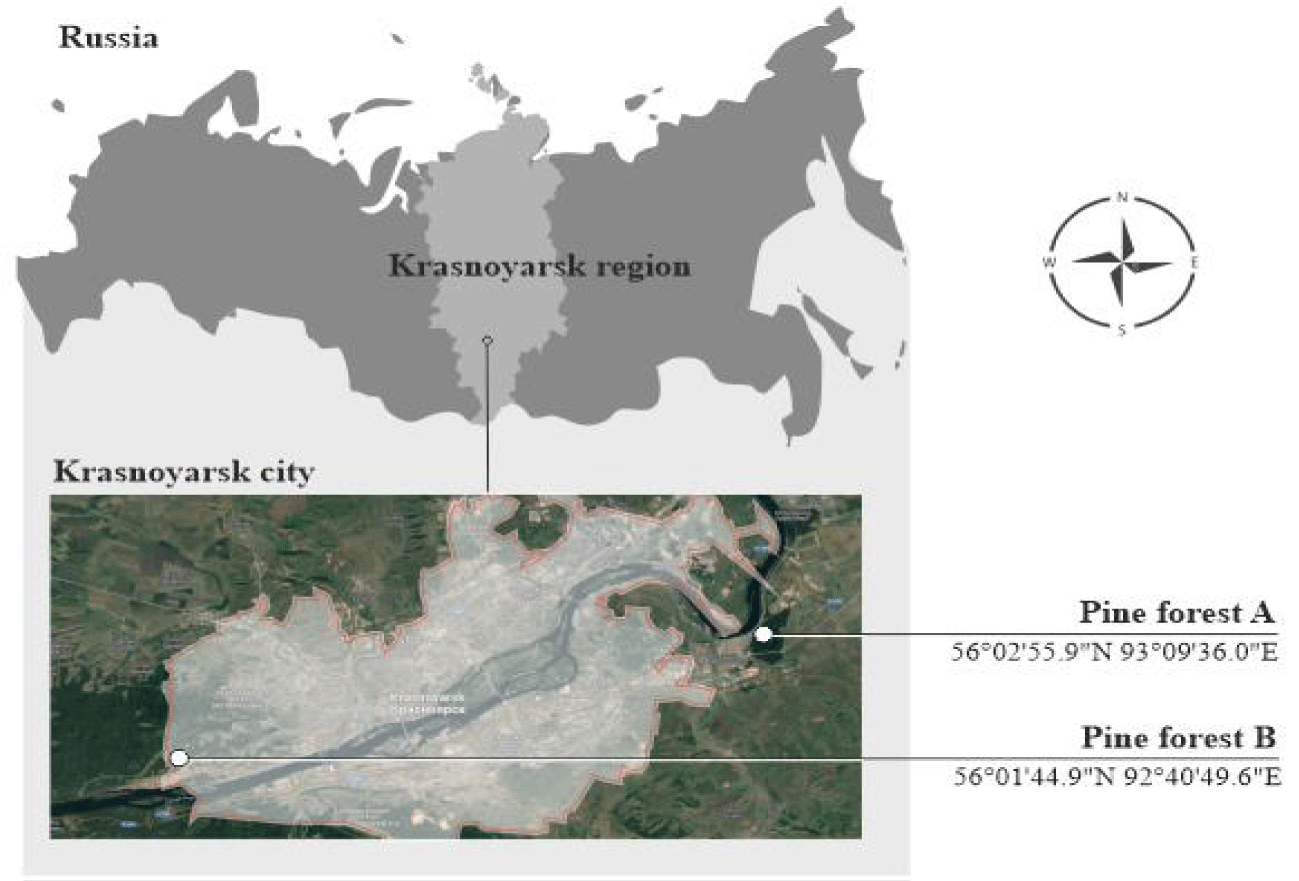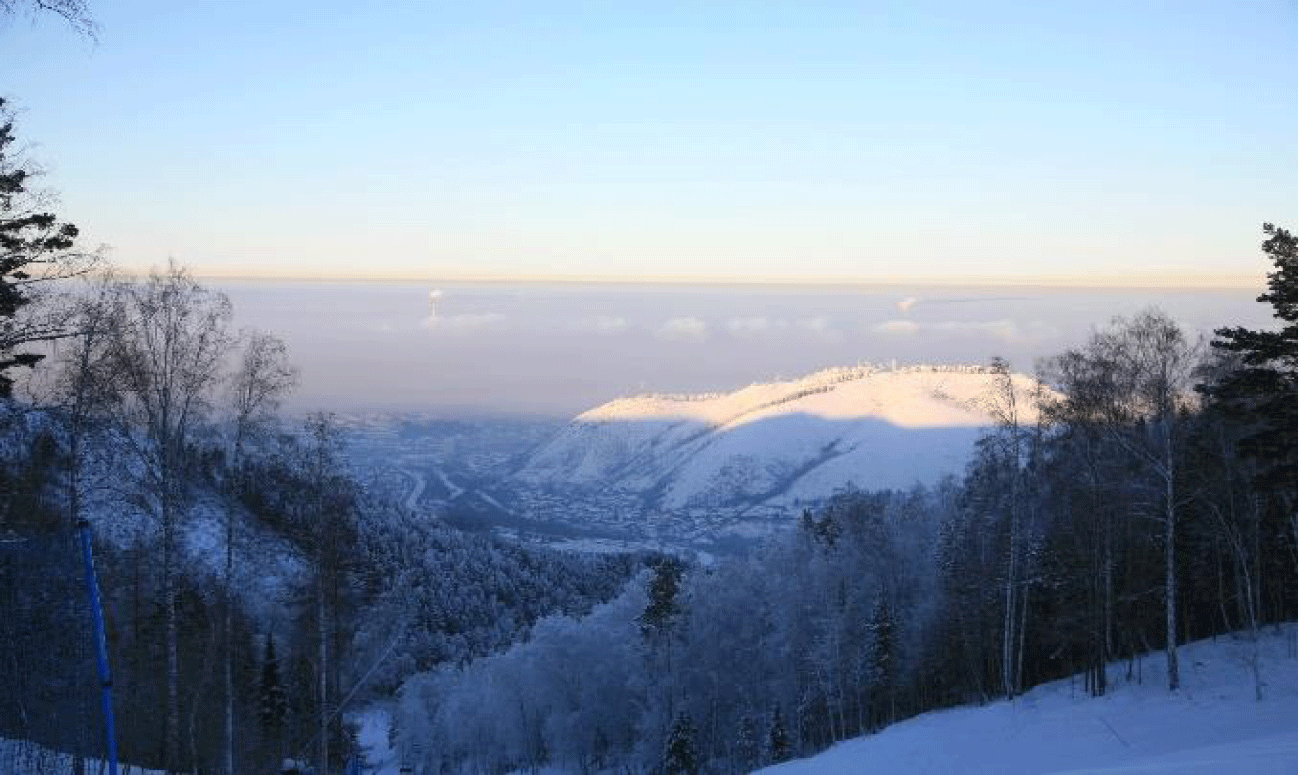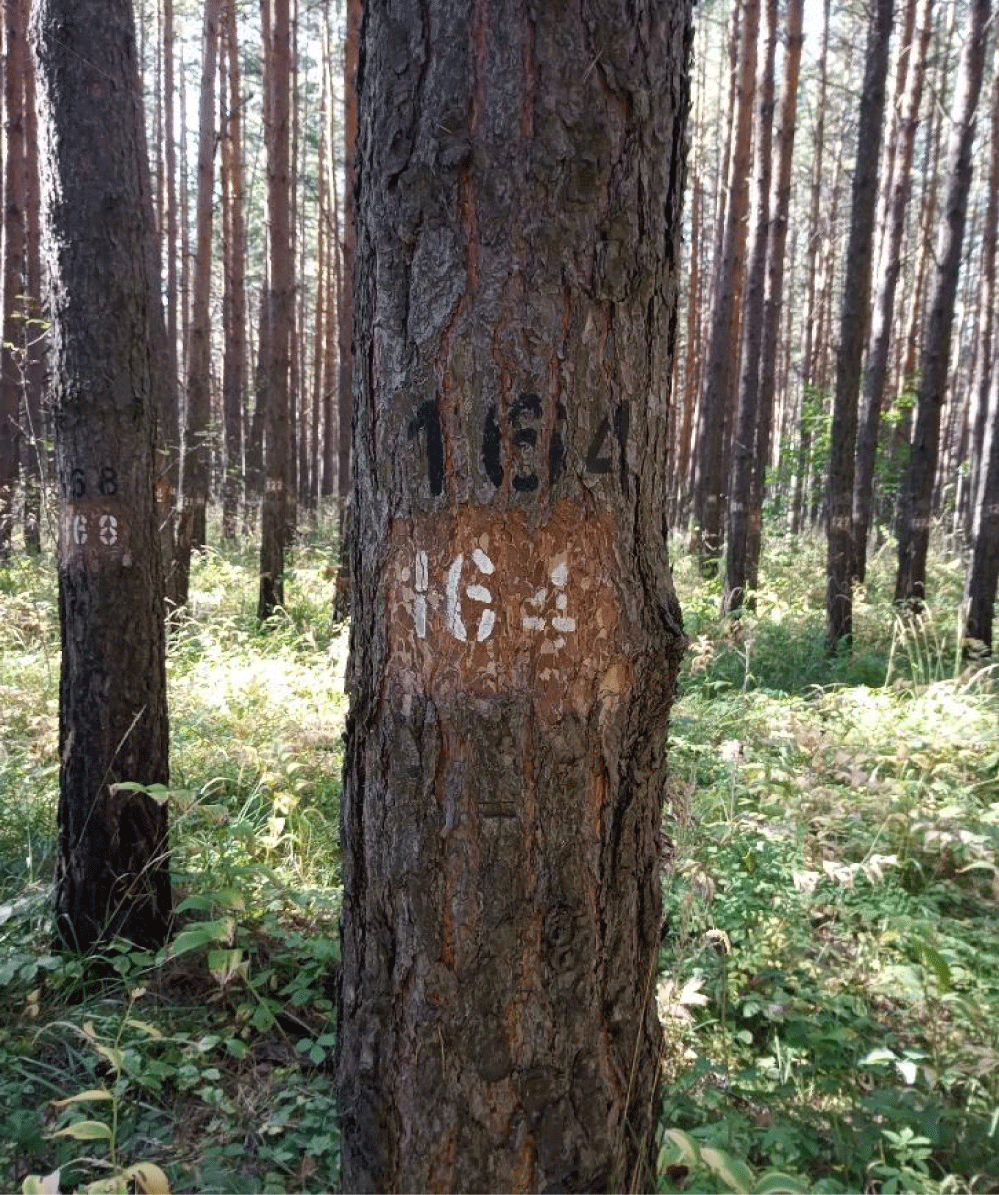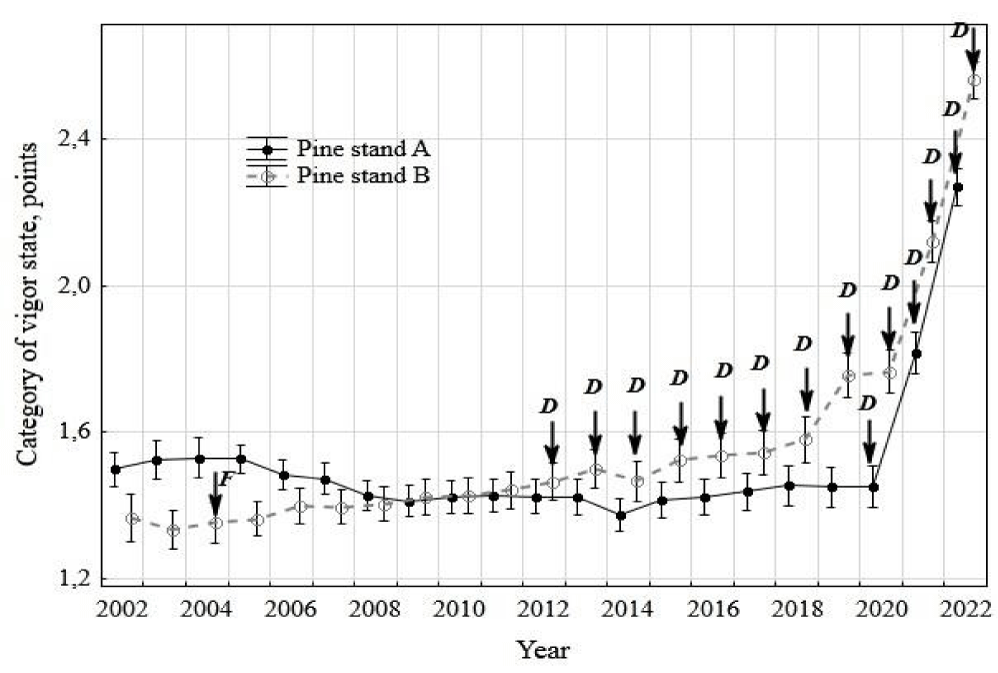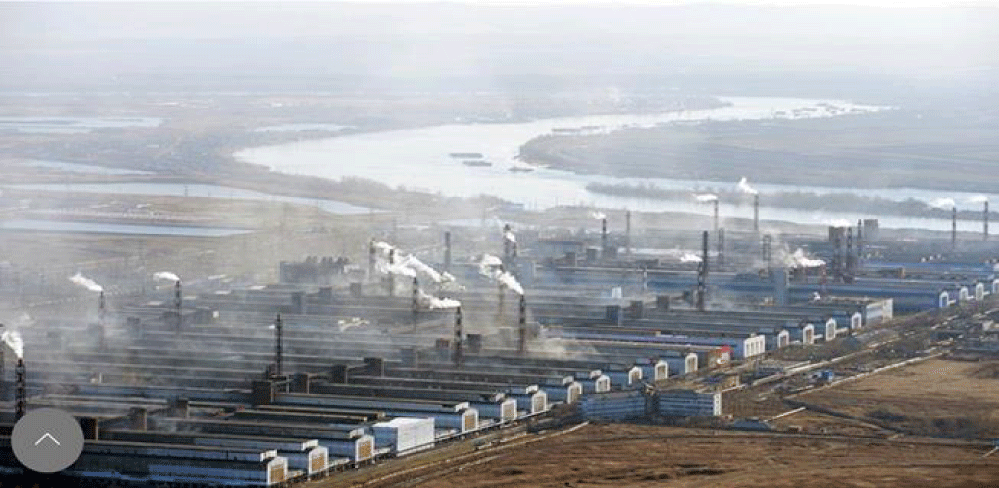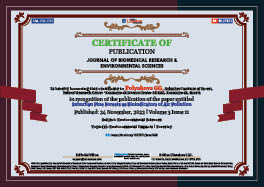Environmental Sciences . 2022 November 24;3(11):1389-1392. doi: 10.37871/jbres1608.
Suburban Pine Forests as Bioindicators of Air Pollution
Polyakova GG1*, Senashova VA1, Podolyak NM2, Podolyak EM3 and Kudryasheva NS4,5
2Non-State Educational Institution of Higher Professional Education Siberian Institute of Business, Management and Psychology, Krasnoyarsk, Russia
3Sports Technologies LLC, Podgorny settlement, st. Kirovskaya, 19, apt. 98, Krasnoyarsk region, Russia
4Siberian Federal University, Krasnoyarsk, Russia
5Institute of Biophysics, Federal Research Center ‘Krasnoyarsk Science Center SB RAS, Krasnoyarsk, Russia
- Bioindicators
- Environmental impacts
- Toxic pollutant
- High-density pine forests
- Ecosystem central siberia
Abstract
The data on monitoring the vigor state of suburban pine forests of the metropolis of Krasnoyarsk in 2021–2022 are presented. These forests belong to the boreal forests of Central Siberia. More than a thousand pine trees marked with individual numbers are examined in pine forests A and B annually (diameter, height and vigor state). Discoloration of needles has been recorded yearly: in pine forest B since 2012 and in pine forest A since 2019. Phytopathological analysis excluded the influence of pathogens or pests on needles; the changes were referred to the impact of air toxins. A sharp deterioration in the vigor state of pine forests A and B has been observed for the last 3-4 years; in B the degradation was more severe. This degradation is confirmed by an increase in the score of the forest vigor state category (6-point scale). We consider the possibility to stop the degradation and restore the forest ecosystems of the metropolis provided the currently used industrial technologies are changed.
Introduction
The intensive development of industry creates a challenge to solve the related problems of resistance of natural ecosystems to the industrial impact, including damage by toxins. For this purpose, reliable techniques should be elaborated to confirm the irreversible damage to these systems, and/or determine their regeneration ability in the case of the impact decrease.
Siberian forests are a convenient object for developing methods for assessing the reversibility of damage to living systems caused by industrial emissions. The suburban pine forests of the metropolis of Krasnoyarsk belong to the boreal forests of Central Siberia. The location of the suburban pine forests of Krasnoyarsk chosen for bioindication is presented in figure 1.
The large area of Siberian boreal forests determines their climate-forming role at the global level [1]. They also provide an example of striking ecological contrasts between intact forests and ecosystems severely damaged by the industrial impact(Figure 2; the latter are evident at the background).
Currently, we conduct annual monitoring of the vigor state of pine forests exposed to industrial pollutants. In this review, we summarize earlier published results obtained in 2002-2021 [2,3] and recent updates of 2022.
The paper is aimed to assess the prospects of using the pine forests in the suburbs of Krasnoyarsk as bioindicators to determine forest resistance to industrial pollutants and to establish the stage of irreversible toxic damage of forest ecosystem.
Materials and Methods
Six Permanent Sample Plots (SPs) were established in two high-density pine forests (A and B) aged 60–80 years (Central Siberia) (Figures 1 & 3). Pine forests are located 1-6 km near the limits of the industrial city of Krasnoyarsk: A - from the eastern side, B - from the western side. Each SPs included 200-250 trees; an individual number was assigned to every tree. In the SPs the inventory and morphological parameters were evaluated annually in 2002-2022 [2,3]: the dynamics of the vigor state and size (diameter, height) of each tree was recorded, the vigor state was assessed using a 6-point scale, the number of trees dying in 1 year was calculated, and a phytopathological analysis of discolored needles was carried out to confirm or exclude damage by diseases or pests.
Results
Rapid deterioration in the vigor state of pine forests in the last four years was revealed (Figure 4). The data for 2022 supplemented and confirmed the trend towards the weakening of the forests in previous years reported earlier [3]. Stronger degradation was noted in pine forest B, in which discoloration of needles was noted earlier (since 2012) compared to pine forest A (since 2019) (Figure 4). The significant decrease in tree density (number per unit area), normally inherent in high-density pine forests, was observed in pine forest B as compared to A in 2014–2016 [2,3].
Discussion
The long-term observation of two forests A and B revealed changes of several inventory and morphological parameters of pine trees which were attributed to chronic exposure of the trees to industrial air pollution. Over the past 3-4 years, the sharp deterioration of the entire forest system is evident(Figure 4).
It is known that high-density middle-aged pine forests gradually thin out under natural conditions: dominant trees remain and suppressed trees are eliminated, the density of the forest gradually decreases, but the category of the forest vigor state does not change [4]. In the case of an industrial impact or another type of damage (diseases, pests), the vigor state of the forest may deteriorate sharply, up to death [5]. Although a decrease in industrial emissions in Krasnoyarsk has been reported by [6], our bioindication data reveal a gradual pine forest degradation and discoloration of needles in susceptible forest B since 2012 (Figure 4). In annual long-term monitoring, a sharp turning point of the vigor state category was registered in 2018 (Figure 4). It should be noted that this degradation is still reversible as it does not exceed the limit of irreversibility (i.e. the vigor state category 4 [3]). Rapid deterioration of suburban forests in recent years indicates the exhaustion of the buffer capacity of the living system (pine forests) to toxic emissions. It is still possible to restore the forest if outdated industrial technologies are abandoned and air pollutant emissions are reduced. Thus, the obtained monitoring data indicate that such studies are significant and innovative and should be continued.
The data from open sources indicate that the main source of pollution in Krasnoyarsk is the aluminum plant which uses the outdated Soderberg technology (Figure 5) [3,6]. In particular, it has been shown that the content of the toxic gas benz(a)pyrene, an indicator of aluminum production, in Krasnoyarsk and Krasnoyarsk’ region can reach 60-100 maximum permissible concentrations [3]. A significant accumulation of fluorine compounds, other indicators of aluminum production, was registered in the forest ecosystems of this region [2,7,8].
The results encourage including forest-based bioindication to the regional system of environmental monitoring as a tool for evaluating the efficiency of long-term governmental activity aimed at enhancing air quality in industrial metropolises.
In connection with the results obtained, an urgent question arises: is it possible to stop the degradation of suburban pine forests and restore them if industrial technologies are improved? Continued monitoring in suburban pine forests will help address this issue.
Acknowledgment
The authors thank Dr. V. I. Polyakov, researchers of N. Sukachev Institute of Forest SB RAS, and the M. V. Polyakov, postgraduate student of Reshetnev Siberian State University of Science and Technology, for help during field experiments.
References
- Arneth A, Harrison SP, Zaehle S, Tsigaridis K, Menon S, Bartlein PJ, Feichter J, Korhola A, Kulmala M, O'Donnell D, Schurgers G, Sorvari S, Vesala T. Terrestrial biogeochemical feedbacks in the climate system. Nature Geosci. 2010;3:525-32.
- Polyakova G, Pashenova N, Senashova V, Podolyak N, Kudryasheva N. Pine stands as bioindicators: Justification for air toxicity monitoring in an industrial metropolis. Environments. 2020;7(428):1-13.
- Polyakova GG, Senashova VA, Podolyak NM, Kolovskaya AV, Kudryasheva NS. Assessment of air toxicity in the megalopolis of Krasnoyarsk using long‐term monitoring of suburban pine forests. Integrated Environmental Assessment and Management. 2022;1-8.
- Polyakov VI, Polyakova GG, Stasova VV. Modeling the growth of pine stands on permanent sample plots. Forest Inventory and Forest Management. 2008;1(39):65-74 (In Russian).
- Nicolotti G, Gonthier P, Rettori A, Rettori A. Decrease of the ecological functionality of trees due to fungal diseases. Journal of Silviculture and Forest Ecology. 2005;2:85-91.
- RUSAL Annual Report for 2022. 20 years of progress. 2022.
- Kolovsky RA, Buchelnikov MA. Monitoring of pollution of the reserve "Stolby" with fluorine. Siberian ecological journal. 2008;15(3):507-13 (In Russian).
- Otnyukova TN. Medicinal kupena (Poligonatum odoratum) – an indicator of atmospheric pollution by fluorine. Vestnik KrasGAU. 2013;4:111-7 (In Russian).
Content Alerts
SignUp to our
Content alerts.
 This work is licensed under a Creative Commons Attribution 4.0 International License.
This work is licensed under a Creative Commons Attribution 4.0 International License.





